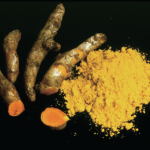A more recent in vivo study evaluated trans-cinnamaldehyde, a bioactive ingredient in cinnamon, in inflammatory arthritis mouse models and found this down-regulated TNFα, NFκB and COX-2 pathways and decreased IL-1β, IL-6, IL-23 and IL-17 in inflamed paw tissue, almost to the same extent as methotrexate.21
Importantly, anyone interested in supplementing their diet with cinnamon should be aware that there are four different species of cinnamon, with Cinnamomum cassia being the most common in the U.S., but also the one with the highest potency of coumarin, a potentially hepatotoxic chemical.22 Potency of coumarin is less than 0.01 g/kg in Ceylon cinnamon (C. zeylanicum), compared with 3.6 g/kg in C. cassia. Although up to 6 g/day of cinnamon has been considered generally safe, long-term administration in large amounts of >3 g/day should be carefully monitored.22
If a patient brings in a new supplement you’re unaware of, a useful resource is the National Institutes of Health (NIH) Office of Dietary Supplements website, which lists
numerous supplements along with references to primary literature.23 Although not comprehensive, the resource is quick and easily accessible when you’re in a busy clinic.
Can supplements potentially worsen my disease?
Yes. Another reason to be informed about this topic is that not everything sold over the counter is entirely benign for patients with rheumatic disease.
The most well-known offender is red yeast rice, which contains lovastatin, and thus should be avoided in patients with anti-HMGCR necrotizing myositis. Natural statins have also been found in oyster mushrooms, some soy products and wheat germ.24 Other natural HMG-CoA reductase inhibitors gaining popularity in the supplement world are mushrooms, with shiitakes being the most potent.25
The previously mentioned market report on supplement sales in the U.S. included a table of top-selling herbal supplements from natural foods stores.10 Coming in at No. 5 was mushroom supplements, with increased sales of 41% in 2020, compared with 2019. Several case reports note either new-onset necrotizing myositis patients or recurrent flares after high consumption mushrooms.24,26,27 Mushroom supplements are still one of newer kids on the block, but with their rise in popularity in some circles, we will need to keep a healthy eye on them.
A recently published review on environmental triggers in dermatomyositis (DM) included a section on herbal supplements and noted Spirulina platensis, Aphanizomenon flosaquae, Chlorella, Echinacea and alfalfa all stimulate the immune system and have been associated with autoimmune skin disease.28 Several case reports note patients who have developed DM or a flare of their disease after taking these supplements.28


